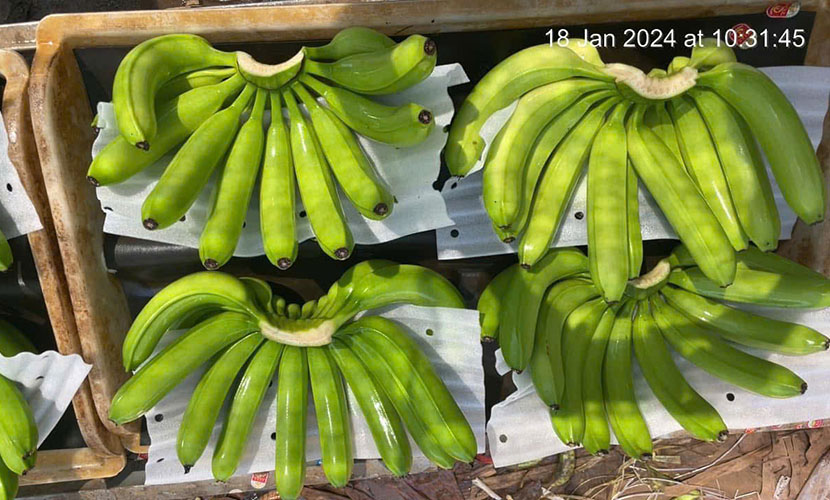
Very few people would have thought that Vietnamese banana exports could become the main export commodities. However, the recent statistics have proven otherwise.
In 2024, Vietnam produced around three million tons of bananas, making it one of the country’s top export fruits. It generated nearly $380 million in export revenue, ranking 9th globally. The strongest growth occurred in major Asian markets such as China, Japan, and South Korea. Notably, Japan, long considered the “home turf” of Philippine bananas, is seeing a shift in market dominance.

Vietnamese banana exports
According to Nikkei Asia, Vietnamese banana exports are gradually gaining market share thanks to their freshness and competitive pricing. In 2024, the country imported 33,000 tons of bananas from Vietnam, nearly 14 times more than in 2019.
In July 2025, the volume of Vietnamese bananas exported to Japan more than doubled compared to the same period last year. While Vietnam’s market share in Japan is only 3.25%, this growth is still seen as impressive.
In China, the world’s largest banana consumer, Vietnam also made historic progress. In 2024, China imported 1.69 million tons of bananas worth $908 million, a decline compared to 2023. However, Vietnamese bananas surged to 625,000 tons worth $261 million. It shoewd a 28% increase in volume and 7% in value.
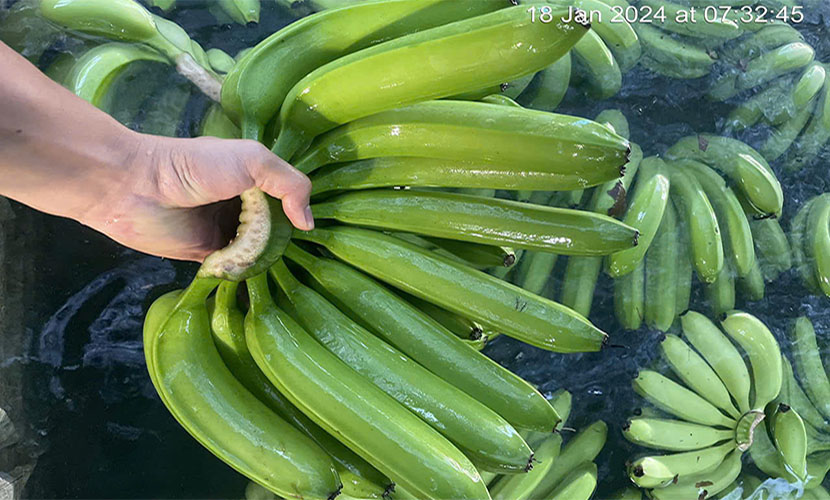
Vietnamese banana bundle
In contrast, banana imports from the Philippines dropped significantly, by 32% in volume and 39% in value. For the first time ever, Vietnamese bananas officially overtook those from the Philippines to become the market leader in this billion-person market.
South Korea is also a key destination. In June 2025, bananas were the top-earning fruit export to South Korea, surpassing mangoes, dragon fruit, and watermelons. Banana exports generated $25.4 million in revenue, despite a 19% year-on-year drop.
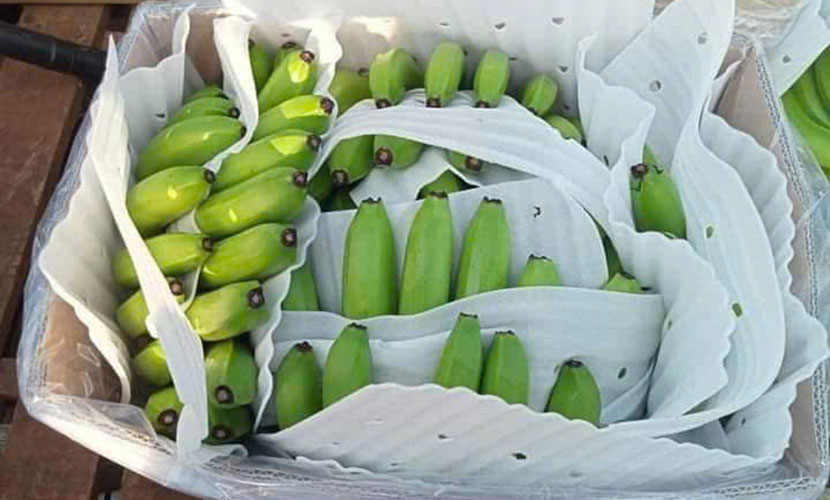
Fresh banana from Vietnam
Over the first six months of 2025, bananas ranked third among Vietnam’s fruit exports, behind only durian and dragon fruit. The export value reached $233 million, up nearly 55% from the same period last year.
Mr. Nguyen, General Secretary of the Fruit and Vegetable Association, attributes the success of Vietnamese bananas to several factors. Specifically, they are favorable market demand and significant improvements in quality and appearance. “Vietnamese bananas meet the criteria of being tasty, nutritious, and affordable. These qualities have made them a favorite in many markets,” he said.
He also highlighted the advantage of lower transport costs due to Vietnam’s geographic proximity to key import markets. This is especially notable compared to the Philippines or South American suppliers. Moreover, the outbreak of Panama disease has reduced banana output in the Philippines, giving Vietnam’s bananas more room to expand.
However, Mr. Nguyen also acknowledged that in the past, Vietnamese bananas faced “rescue campaigns”. This was because of farmers’ lack of cultivation experience and harvest times overlapping with China’s domestic banana season. Today, thanks to lessons learned and improved seasonal planning, these issues have decreased significantly.
In addition to fresh exports, some localities have begun experimenting with dried bananas, banana flour, and byproducts for livestock feed or handicrafts.
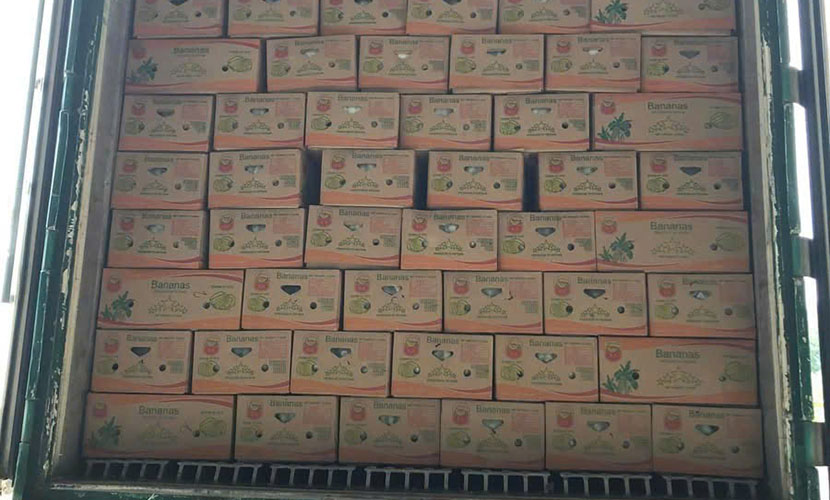
Loading Vietnamese banana exports
Mr. Liem, an expert, expressed optimism that Vietnamese bananas could join the “billion-dollar export club.” According to him, Vietnam currently holds just over 3% market share in Japan. Meanwhile, the global banana trade is worth $15 billion annually and demand is still rising.
“Banana supply is shrinking due to disease in traditional growing areas like Ecuador, the Philippines, Australia, and even China. This presents an opportunity for emerging growing regions in Vietnam, Cambodia, and Laos,” Mr. Liem noted.
Vietnam currently has around 160,000 hectares of banana plantations. If just 30% of this area were allocated for export, a $1 billion annual export target would be within reach.
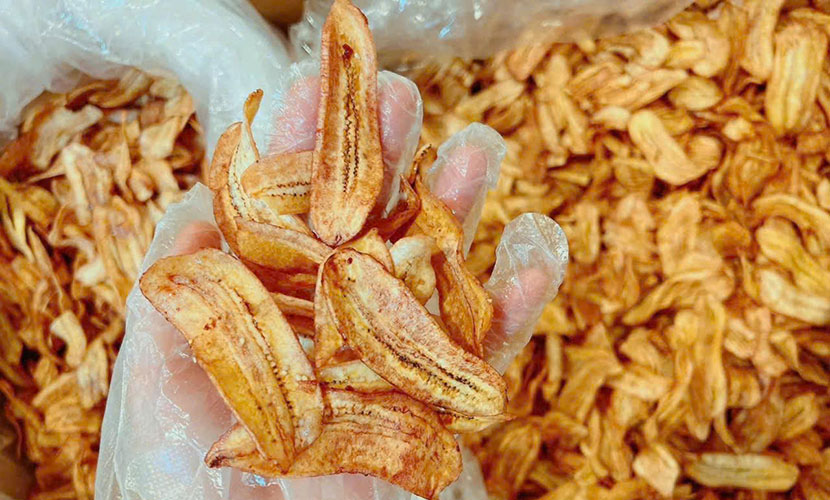
Dried banana from Vietnam
Still, the journey to a $1 billion banana export industry faces many challenges. Unlike other agricultural products, bananas do not have a “golden season” at the end of the year. In fact, this is typically a low-demand period, limiting year-round revenue growth.
With $233 million in export earnings in the first half of 2025, the full-year export total is expected to fall short of $500 million. This means the $1 billion target remains a long-term goal. This requires a well-planned strategy and coordination from production to consumption.
To achieve sustainable growth, Vietnam’s banana industry must diversify its export markets. “Currently, China accounts for up to 70% of Vietnam’s total banana exports. Therefore, expanding into Japan, South Korea, the Middle East, and Europe is essential to reduce dependency and manage risks,” the expert concluded.
Vietnamese source: https://cafef.vn/xuat-khau-chuoi-voi-giac-mo-ti-do-188250814061813461.chn
